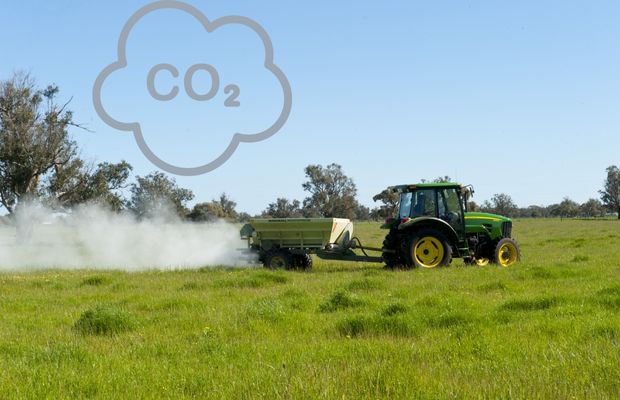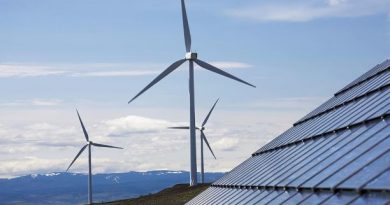Examining the Biggest Polluters: Report Card of Agriculture Sector
 RBI Issues Draft Disclosure Framework For Banks Over Climate-Change Risks
RBI Issues Draft Disclosure Framework For Banks Over Climate-Change Risks
Agriculture is both a victim of and a contributor to climate change. The sector is one of the biggest polluters in the world. The greenhouse gases (GHGs) due to agriculture and allied activities include the likes of nitrous oxide (N2O), carbon dioxide (CO2) and methane (CH4) – which all are responsible for climate change and global warming. Further taking into account the GHG emissions associated with the use of pesticides, the pollution levels are even higher, the environmental cost of which remains unrecognized.
Agriculture, forestry, and other land use can provide large-scale emissions reductions and also remove and store carbon dioxide at scale. As the world moves toward goals of achieving carbon neutrality, this important sector can not be ignored.
In the light of reducing emissions from various industries (the biggest polluters on the planet), tackling emissions from the agriculture sector is as important if the countries hope to limit the temperature rise limiting global warming to 1.5°C.
Share in the Global Pollution
According to the World Bank, Agricultural activities contribute up to 29 per cent of total greenhouse gas emissions. This is mainly due to the use of chemical fertilizers, pesticides and animal wastes. As the population grows further, the requirement for dairy and meat products will also grow, along with the intensification of agricultural practices. As per World Bank, the world will need to produce about 70 per cent more food by 2050 to feed an estimated 9 billion people. Other industries are shrinking their carbon emissions, so the share of agriculture in global emissions is going to increase further.
Region-wise, Asia, with 38 per cent of the global share, was the biggest polluter – emitting about 4.1 billion metric tons of carbon dioxide (Gt CO2e) – in 2019. Africa and Latin America, with 2.36 Gt CO2e (22 per cent) and 2.3 2.36 Gt CO2e (21.5 per cent), followed. Europe, North America, and Oceania emitted 0.94, 0.73, and 0.24 Gt CO2e, respectively.
Measures Taken to Reduce Carbon Footprint
International institutions are at the forefront of the efforts to curb emissions and bring down the global temperature rise rate. In 2020, about 52 per cent of World Bank financing in agriculture targeted climate adaption and mitigation.
Changing diets and altering farming methods, along with protecting forests, could contribute around a quarter of the greenhouse gas cuts needed to avert the worst impacts of climate change, according to the United Nations climate panel.
Various governments have been exploring ways to bring down emissions due to agriculture and allied activities as much as possible. The countries, in addition to their measures, are also working in tandem with the World Bank in their efforts to scale up climate-smart agriculture.
Asia
Asia has the highest share of emissions due to the agriculture sector in the world. Hence, the World Bank’s support of CSA is making a difference in Asia, and across the globe, at large. In China, a suite of projects representing US$755 million of World Bank investments supports resilient and lower-emissions agriculture practices and institutions. Recently, one such project helped China in reducing GHG emissions by 23,732 tons of CO2 equivalent while increasing the soil carbon sink by 71,683 tons of CO2.
The Sustainable Livestock Development Program-for-Results (2021 to 2025) in Kazakhstan addresses issues of land degradation, biodiversity conservation, pollution control, and mitigation of GHG emissions along the value chain in the beef sector. Bangladesh is also aiming to address climate mitigation by improving emissions intensity and improving production efficiency, including use of low-emission technologies for activities such as milk chilling and transport.
India
In India, the agriculture sector contributes 14 per cent of the total GHG emissions. Agricultural emissions in India are due to enteric fermentation (54.6 per cent of total), fertiliser (19.1 per cent), rice cultivation (17.5 per cent), manure management (6.7 per cent), and field burning of agricultural residues (2.2 per cent).
The Indian Council of Agricultural Research and International Agricultural Research Centres of the CGIAR system, including the International Crops Research Institute for the Semi-Arid Tropics (ICRISAT), have developed climate-smart agricultural technologies and approaches to assist the agricultural sector to be less vulnerable to adverse impacts of climate change.
The Maharashtra Project for Climate Resilient Agriculture, at US$420 million, is one of the largest CSA projects the World Bank has financed to date. The project will yield climate change improvements of US$386 million. As of June 2020, 309,800 project beneficiaries have adopted climate-smart agriculture practices.
Africa
The World Bank’s support of CSA has also penetrated the African continent. The West Africa Agricultural Productivity Program (WAAP) involves helping 13 countries develop climate-smart varieties of staple crops, such as rice, plantains, and maize. As of July 2019, the project had directly helped more than 9.6 million people and more than 7.6 million hectares of land be more productive, resilient, and sustainable.
In the east-African nation of Malawi, about 140,000 farmers have adopted a range of CSA practices. Similarly, Moroccan Green Generation Program-for-Results aims to increase marketing efficiency and environmental sustainability in agriculture sector. Its technical extension will support 12,000 farmers in adopting additional climate-smart agriculture practices. In Niger, a project is specifically designed to deliver climate-smart agriculture to benefit 500,000 farmers and pastoralists. So far, it has helped over 300,000 farmers more sustainably manage their land and brought 79,938 hectares under more sustainable farming practices.
In the Sahel region – Burkina Faso, Chad, Mali, Mauritania, Niger and Senegal – a World Bank-supported project is helping pastoralists adopt climate-smart agriculture.
Latin America
The World Bank also supported South American agri-producers like Uruguay, Brazil and Colombia in their sustainable agriculture productions. Uruguay has developed an Agricultural Information and Decision Support System and prepared soil management plans. Since 2014, CSA has been adopted on 2,946,000 hectares and 5,139 farmers have been supported to make their farms climate-smart. Brazil’s Sustainable Production in Areas Previously Converted to Agricultural Use Project (ABC Cerrado) studied approaches for agricultural extensions to promote low-carbon agriculture while boosting private profitability. The practices are expected to contribute to the sequestration of 7.4 million tons of CO2 equivalent over the next decade.




